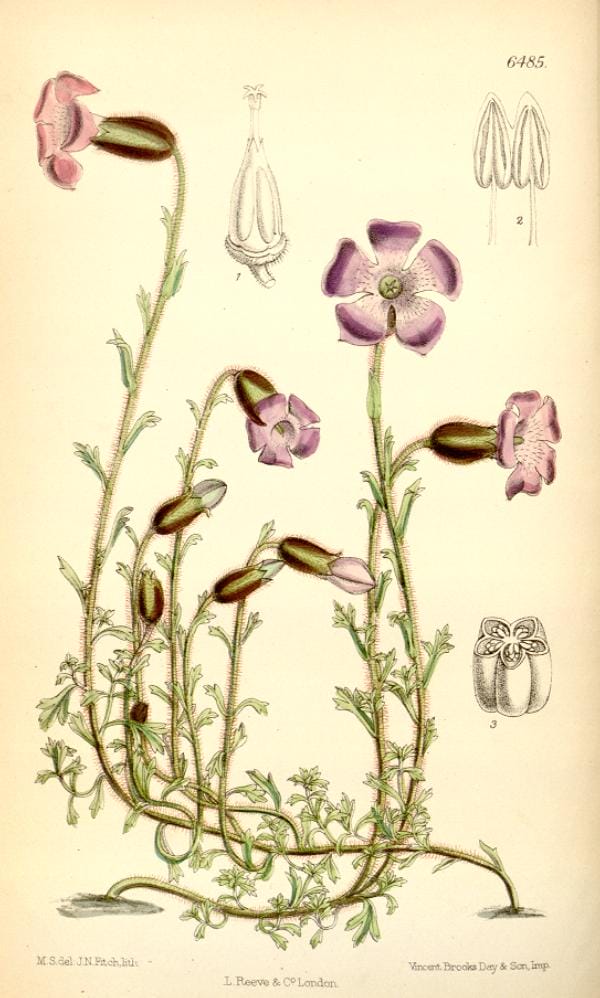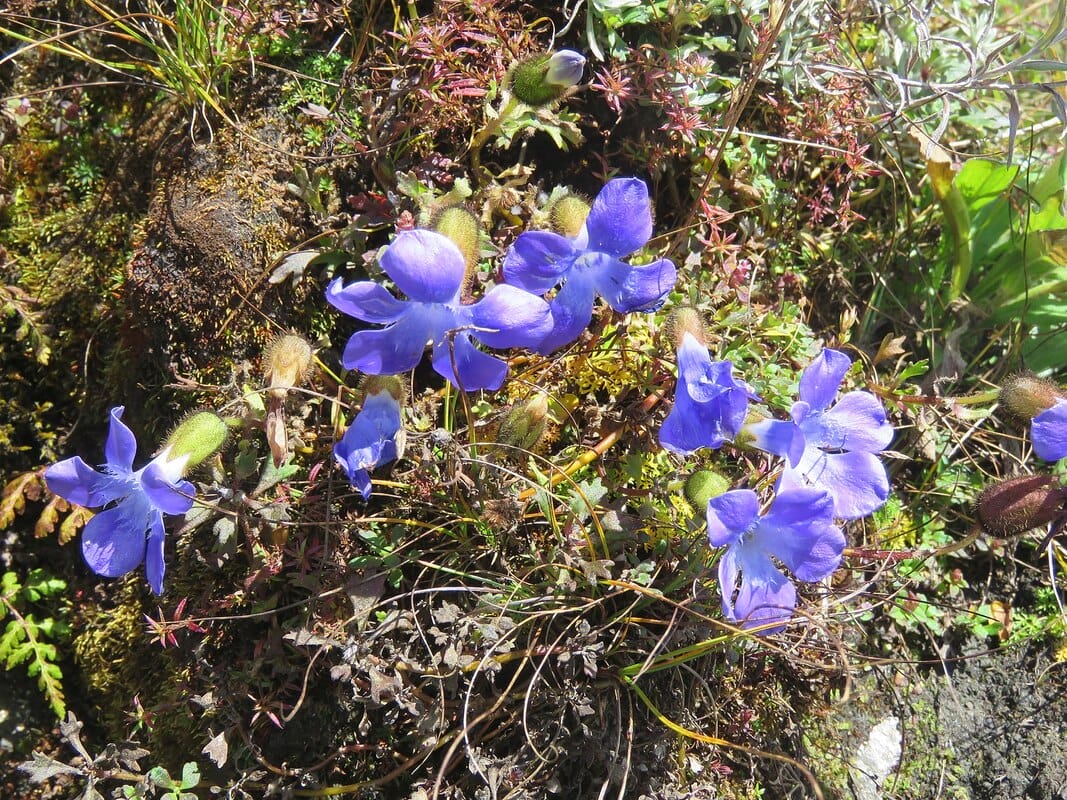Cyananthus, Sngon bu mchog སྔོན་བུ་མཆོག་
Trailing BellflowerSngon bu mchog (Tibet)
Lie Ye Lan Zhong Hua 裂叶蓝钟花 (TCM)
 Cyananthus lobatus
Cyananthus lobatus(Curtis’s botanical magazine, 1880)
 Cyananthus lobatus growing wild in Bhutan
Cyananthus lobatus growing wild in Bhutan(Photo by Vinayaraj) (Wikimedia)
Botanical name:
Cyananthus spp.
Several varieties are known:
1. Superior; Sngon bu mchog (larger with dark blue flowers)
a. C. lobatus
b. C. argenteus
c. C. microphyllus
2. Lesser, Sngon bu dman pa (smaller with pale blue flowers)
a. C. chungdienensis
b. C. incanus
Other species reportedly used include C. formosus, C. sheriffii
There are many species found throughout China and Tibet, other species probably also supplying Sngon bu.
Parts used:
Whole plant
Temperature & Taste:
Warm. Sweet, Bitter
Classification:
Uses:
1. Clears Heat and Damp:
-mild purgative in Bile and Damp disorders
-Lymph disorders from either Hot or Cold
–Chu ser (Damp-Heat) disease: itching, small pimples with dark and rough skin, swelling, loss of hair
-‘Yellow Water disease’
-abdominal pain, gastric ulcers
-Constipation
2. Strengthens Spleen, Tonifies Qi: (TCM)
-Fatigue, poor appetite, loose stool
-Shortness of Breath from deficiency
-Diarrhea in children
3. Soothes the Liver, Stops Spasms:
-Infantile Convulsions
-Spasms, Cramps
-Rheumatism, Paralysis
4. Externally:
-leaf and flower are applied to Wounds
-flowers are rubbed on chapped lips
Dose:
Powder: 1–3 grams
Decoction: 9–15 grams
Substitutes:
Other species listed as sources for Sngon bu which are probably substitutes include:
1. Gentiana aristata
2. Ipomoea hederacea
3. Lactuca dissecta, L. dolichophylla
Main Combinations:
1. Gastric Ulcers, Cyananthus with Indian Spikenard
Major Formulas:
Cautions:
None noted
